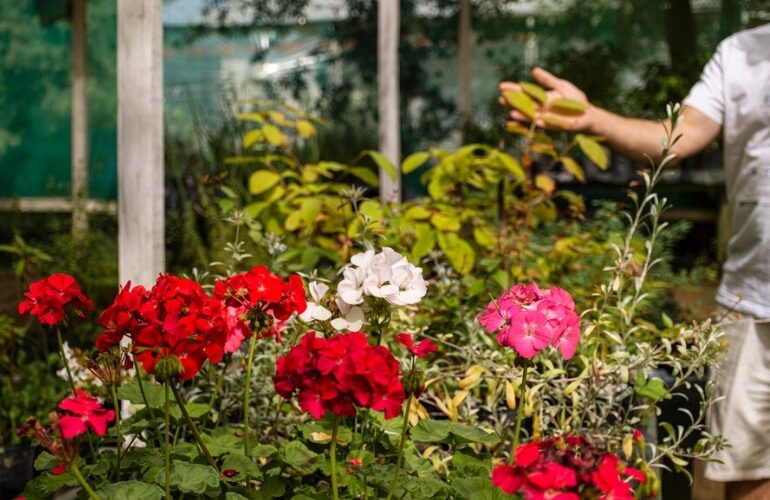Creating a vibrant garden is a delightful challenge that invites both creativity and planning. The right plants can transform an ordinary outdoor space into a kaleidoscope of colors, textures, and fragrances. With countless options available, selecting the right varieties can be overwhelming. It’s important to think carefully about your garden’s environment and your personal preferences when making your choices. By understanding key factors like climate, soil, and maintenance requirements, you can curate a lively garden that reflects your unique style.
Understanding Your Garden’s Environment
Before diving into plant selection, take the time to observe your garden’s specific environment. This begins with understanding the sunlight patterns in your space. Different plants thrive under varying light conditions; some prefer full sun, while others thrive in shade. Conduct an experiment over a week to note where sunlight falls at different times of day. This simple practice lays the groundwork for your plant choices.
Next, consider your soil type. Is it sandy, clay-like, or loamy? A soil test can determine pH levels and nutrient content, helping you select plants that will flourish in your garden. Certain plants favor acidic soils, while others thrive in alkaline conditions. Familiarity with your local climate is equally essential. Understanding your hardiness zone allows you to pick plants suited to your region. By aligning your choices with your environment, you set the stage for a thriving garden.
Choosing the Right Plant Types
With a good grasp of your garden’s environment, the next step is exploring various plant types that can enhance your outdoor space. For instance, flowering plants can add splashes of color throughout the growing season. Selecting flowering varieties that bloom at different times also ensures that your garden exhibits a continuous flow of colors rather than a one-time show. This thoughtful approach to plant selection can maintain visual interest throughout the year.
Incorporating non-flowering plants can provide structural support and contrast in foliage. Consider hardy shrubs and ornamental grasses that offer texture and movement without competing for attention with brightly colored blooms. Perennials are also a beneficial addition to your garden. They return year after year, providing both resilience and beauty without the need for replanting, which is a savvy choice for those seeking a low-maintenance garden.
Addition of Textures and Colors
Texture and color play a significant role in how your garden is perceived. Combining different leaf shapes and sizes introduces a tactile element that enhances the sensory experience. Accessorizing with ornamental grasses can add movement and softness to your garden, contrasting beautifully with more rigid structures like shrubs and trees.
In terms of color, think about how shades interact with one another. Starting with hydrangea plants or a few staple varieties can provide a stunning backdrop against which to build your garden’s vibrancy. Cool colors like blues and purples evoke calmness, while warm tones like reds and yellows stimulate energy. For a harmonious garden, consider choosing plants that align with a specific color palette.
Caring for Your Plants
Selecting plants suited to your garden is only the beginning. Understanding their care requirements is pivotal. Different species possess various water, light, and fertilization needs, which can affect their growth and health. For instance, while some plants prefer moist soil, others thrive in drier conditions. To maintain the vibrancy of your plants, establish a regular irrigation schedule that caters to their unique needs.
Consider using organic mulch to help retain moisture and suppress weeds. This simple method benefits your plants and enhances the aesthetic appeal of the garden. Regularly inspect your plants for pests or diseases, as early detection can prevent larger problems down the road. With routine care and attention, your plants can thrive and complete a lush landscape.
Designing Your Perfect Garden
Creating a visually appealing garden also requires thoughtful design. Start by envisioning how you want your garden space to feel. Would you prefer a wildflower look or a cultivated arrangement? The design should align with your taste and complement your home. Utilize paths, borders, and focal points like garden statues or benches to create an inviting layout.
Layering your plants is a technique that can enhance the visual impact of your garden. Place taller plants at the back and shorter ones at the front, allowing each variety to shine. This strategy also ensures that sunlight reaches all plants below tall specimens. By establishing a well-thought-out design, you create a garden that stimulates the senses and beckons visitors to explore.
Seasonal Changes in Your Garden
To create a garden that remains captivating year-round, incorporate seasonal interest into your design. Select plants that bloom in different seasons or add evergreens that provide structure during the winter months. Not only will this approach sustain the visual appeal through seasonal transitions, but it can also support local wildlife by providing food sources and shelter throughout the year.
Consider integrating herbs and vegetables into your design as well. They can be both functional and aesthetically pleasing, offering scents and colors during the growing season. By accounting for seasonal changes, you establish a living landscape that breathes joy into every moment.
Bringing your garden to life is an enriching process filled with potential. By understanding your garden’s environment, carefully selecting the right plants, and maintaining them diligently, you can foster a space that flourishes in beauty year-round. Remember to design with intention, embracing textures and colors that resonate with your vision. The success of your garden lies not only in its immediate beauty but in the ongoing joy and fulfillment it brings as it grows alongside you.
